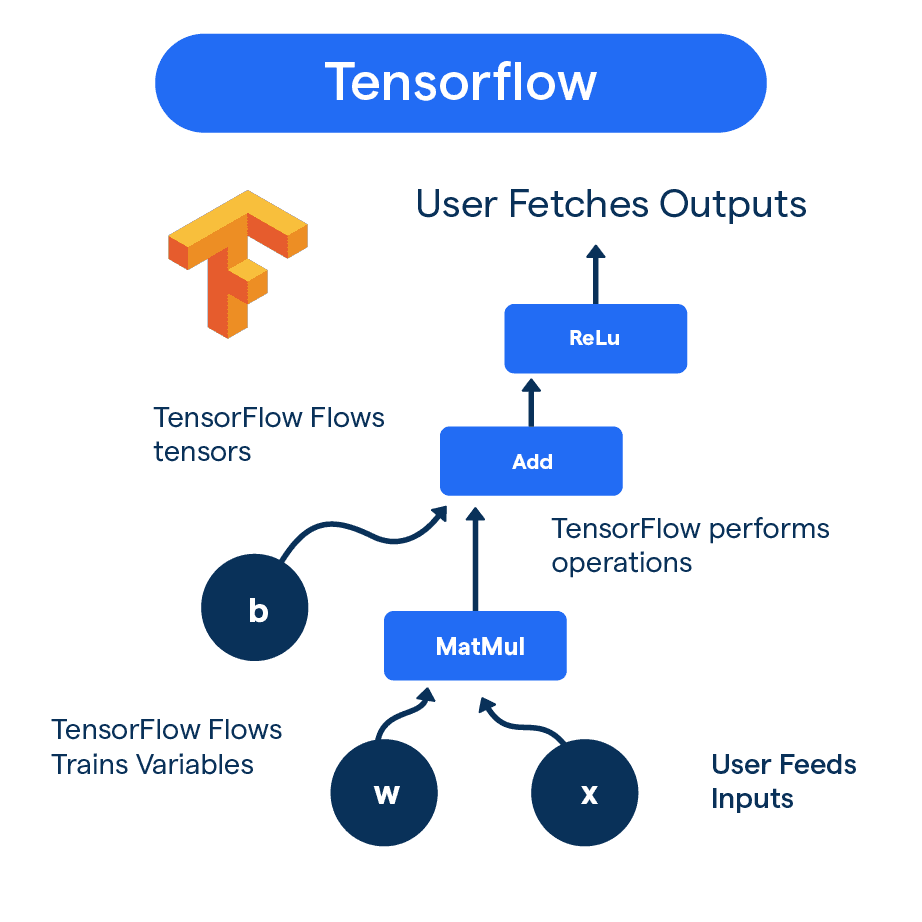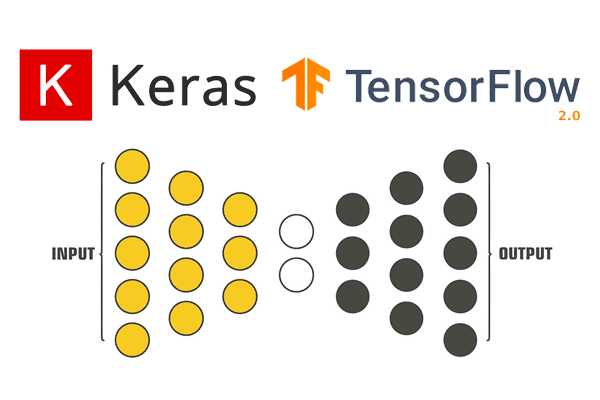Are you excited about the world of Artificial Intelligence (AI) and its potential to revolutionize how we live and work?
If so, you've come to the right place!
In this blog post, we'll explore two powerful tools - TensorFlow and Keras - that drive AI innovations and make deep learning accessible to everyone.
As of March 5, 2024, TensorFlow has over 183,000 stars on GitHub, indicating significant developer interest. It continues to grow in popularity due to its flexibility, scalability, and community support.
So, let's get started on this exciting journey as we unravel the limitless possibilities of AI with TensorFlow and Keras!
What is TensorFlow?

Before we delve deeper into TensorFlow, let's first understand what it is.
TensorFlow is an open-source deep learning framework developed by Google Brain. It provides a robust, flexible platform for building and training machine learning models.
With its computational graph, TensorFlow allows us to define complex mathematical operations and execute them efficiently on different hardware architectures, such as CPUs and GPUs.
The Benefits of TensorFlow
TensorFlow offers many benefits, making it a popular choice among AI enthusiasts and professionals. Some of these benefits include:
- Scalability: TensorFlow's computational graph allows for distributed computing, enabling users to train models on multiple machines seamlessly.
- Flexibility: TensorFlow provides a range of APIs in different languages, including Python, C++, and Java. This versatility enables developers to choose the language they are most comfortable with.
- Visualization: TensorFlow has a powerful visualization tool called TensorBoard, allowing users to analyze and debug their models easily.
- Integration: TensorFlow integrates well with other tools and frameworks commonly used in machine learning, such as Keras, which we'll explore next.
Introduction to Keras
Keras is a high-level deep-learning library that runs on top of TensorFlow. It provides a user-friendly interface for building and training neural networks.
Keras abstracts away the complexities of low-level programming, making it accessible to beginners while still offering advanced features for experts.
The Advantages of Keras
Keras offers several advantages, making it a popular choice for deep learning projects. Here are a few key advantages:
- Simplicity: Keras is designed to be easy to use and understand. Its user-friendly APIs allow users to define and train neural networks with just a few lines of code without compromising performance.
- Modularity: Keras follows a modular approach, allowing users to build models by stacking layers on top of each other. This modularity makes it easy to experiment with different network architectures and quickly iterate on ideas.
- Customization: While Keras provides a high-level interface, it allows users to customize their models and define their layers and loss functions. This level of flexibility is essential for advanced users and researchers.
- Community Support: Keras has a vibrant and supportive community that contributes to its growth. This community provides tutorials, documentation, and code examples, making it easier for new users to get started and seek help when needed.
Suggested Reading:
Bringing TensorFlow and Keras Together

Now that we understand TensorFlow and Keras individually, let's explore how they work together to power AI innovations. TensorFlow is the backbone, providing low-level operations and a distributed computing framework.
Conversely, Keras is a high-level API that sits on top of TensorFlow, making it easier to build and train neural networks.
With TensorFlow and Keras, you can leverage the best of both worlds. TensorFlow's scalability and flexibility mesh well with Keras' simplicity and ease of use, enabling developers to build and experiment with complex neural networks efficiently.
This combination has fueled many AI innovations and enabled the development of state-of-the-art models across various domains.
Suggested Reading:
Conclusion
In this blog post, we've explored the power of TensorFlow and Keras in AI innovations. TensorFlow provides a robust and flexible platform for building and training machine learning models, while Keras simplifies the process by providing a high-level API.
Together, they empower developers and researchers to create cutting-edge AI solutions.
So, if you're excited about AI and want to dive into deep learning, try TensorFlow and Keras. With their combined strengths, you'll be well-equipped to tackle the challenges and opportunities that lie ahead.
Happy coding and innovating!
Frequently Asked Questions (FAQs)
What is the difference between TensorFlow and Keras?
TensorFlow is a deep learning framework, while Keras is a high-level library that runs on top of TensorFlow to provide a user-friendly interface for building neural networks.
What are the benefits of using TensorFlow?
TensorFlow offers scalability, flexibility with multiple language support, and a powerful visualization tool (TensorBoard) for easy analysis and debugging. It also integrates well with other machine-learning tools and frameworks.
Why is Keras popular in the deep learning community?
Keras is popular because of its simplicity and user-friendly APIs, allowing for easy neural network building and training. It follows a modular approach, offers customization options, and has a supportive community providing tutorials and documentation.


